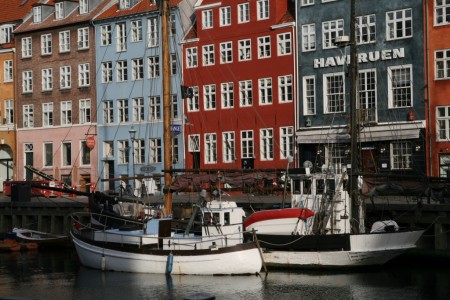Many aboriginal groups and artists have traditional marks, designs, patterns or otherwise which they use in association with their cultural heritage or with goods or services. Canadian intellectual property laws are broad enough to provide protection to many of these. This post sets out a high-level overview of these protections and what they may apply to.
TRADE-MARK
Trade-marks are available for word marks, design marks, and distinguishing guises of packaging, used in association with goods or services in Canada, which are registered with the Canadian Intellectual Property Office. Once registered, no person may reproduce the mark in association with goods or services without a license, nor dilute the goodwill associated with the mark (i.e. disparage it) by using it on other goods or services. In addition, no person may use a similar or confusing mark with other the goods or services in such as way that would confuse or mislead members of the public.
Trade-mark protection may be appropriate for certain patterns, artworks, names, or otherwise used in association with goods or services offered by an aboriginal group. It is a powerful tool for protection. In particular, Canadian trade-mark law can be used to provide a licensing avenue to monetize intellectual property while avoiding misuse by others, for example, in association with a product disapproved of by the particular First Nation, Indian Act band, group or individual.
Unregistered marks may also be defended and enforced. In particular, an unregistered mark may be used to prevent registration of a potentially confusing trade-mark or to invalidate a prior registration.
OFFICIAL MARK
An official mark is special. It grants protection over-and-above what a normal trade-mark can provide, and is a powerful tool for those who can use it. Unlike trade-marks, which are tied to the particular product or service they are marked upon, official marks protect anything “resembling” the mark. An official mark also does not need to be “distinctive”: it can be generic or resembling a registered trade-mark.
Aboriginal groups have utilized these marks for economic development and cultural protection. The Kitasoo Band Council, along with the City of Terrace and the Province of BC, holds a published official mark for the word mark “SPIRIT BEAR”. The Kitasoo Band Council licenses this to companies who wish to manufacture products associated with the spirit bear or utilizing a spirit bear image. They also use it to protect their mark from use on products their community does not wish the spirit bear to be associated with, such as alcohol production and sale.
In order to qualify for an official mark, an aboriginal group must demonstrate it is a “public authority” which has adopted and used the mark. The Canadian Intellectual Property Office accepts Indian Act bands as public authorities.
Aboriginal groups interested in the protection an official mark provides should retain a lawyer or skilled trade-mark agent to ensure they adopt and use the mark successfully, prior to its application.
CERTIFICATION MARK
A certification mark may be used to identify goods or services of a defined standard, with respect to the character of quality, conditions of manufacture or provision, the class of persons who produced or provided the services, and the geographic area. The idea is that a registrant of a certification mark becomes a “gatekeeper” who authorizes others to use the mark on goods or services which meet the defined standard. For example, the Woolmark design is owned by Woolmark Americas Ltd. And is used on clothing and other goods to certify the products are made with 100% new pure wool.
This is a tool for organizations which wish to license the conditions of their products to others: for example, services which work in conjunction with aboriginal groups, or woolen goods of a certain standard (“Genuine Cowichan Approved”, owned by the Cowichan Band Council of B.C.), could both be the subject of certification marks.
COPYRIGHT
Canadian copyright laws protect every original artistic, dramatic, musical and literary work, including compilations thereof. This includes sculptures, paintings, drawings, plans, engravings, photographs, and other works of artistic craftsmanship. This provides a useful protection which is easily prosecuted in the courts.
ARMORIAL BEARINGS
A unique protection utilized by some aboriginal groups are “armorial bearings”: honours stemming from the Canadian Crown, which can be used to protect various types of aboriginal intellectual property in a limited and unique way. Once illustrated and approved by the Chief Herald of Canada, these are “official marks” and cannot be used without the consent of the owner and the Chief Herald of Canada.
The Chief Herald of Canada has the ability to grant Canadian citizens and corporate bodies such bearings, which protects coast of arms, flags, and badges. These marks may incorporate indigenous artwork, languages, or symbols.
For example:
- the Nisga’a Nation has a badge, consisting of the Hayatskw emblem;
- the Siksika Nation of Alberta has a badge, consisting of a buffalo courant with two eagle feathers; and
- the First Nations Tax Commission’s coat of arms incorporates artwork by Tom Maracle of the Tyendinaga Mohawk Territory, including the motto, NESAYKA MAMOOK CHEE WAYHUT, chinook for “We build a new path.”
OBTAINING PROTECTION
To obtain protection, a lawyer or registered trade-mark agent should be contacted to assist with an application and the structuring of the relevant intellectual property rights.
Photo by Siomonn Pulla under a Creative Commons license. No changes were made to this image.


